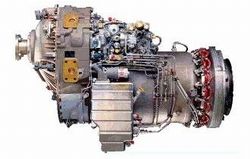Sun, May 30, 2010
Data Was Collected By A Research Aircraft That Flew 30 Hours
Through Ash Clouds
It's been a while since we've heard about widespread airspace
closures due to the eruption of the volcano in Iceland. But it's
certainly a question of when, rather than if, such an event
will happen in the future. And what has become evident is that much
more needs to be known about how volcanic ash affects turbine
aircraft engines. With that in mind, Honeywell said Thursday that
it will be analyzing the effects of ash ingestion in two of its
TPE331 turboprop engines which were used to gather scientific data
during the recent volcanic eruptions and flights into the
subsequent ash cloud over Europe.

TPE331 Engine
The engines powered a Dornier 228 and accumulated 10 hours of
operation in the volcanic ash cloud and an additional 22 hours of
operation in the outer zone of the cloud. The engines have been
returned to Phoenix, AZ for analytical teardown and
evaluation.
"The industry has little information on the effects of volcanic
ash ingestion in turbine engines and we hope the data we gain from
this effort will help define operational impact to the engine and
any damage to components," said Ronald J. Rich, Vice President,
Propulsion Systems, Honeywell Aerospace. "These volcanic eruptions
give us an opportunity to systematically analyze volcanic ash
impact to our engines and this examination could yield a basis for
future turbine engine performance and maintenance service
data."
The TPE331 powered aircraft operated by the Natural Environment
Research Council in the United Kingdom, was collecting particulate
data at one second intervals during their flights into the clouds.
The data includes composition of the debris along with navigational
and engine operational data.

Volcanic Ash Cloud Photo 4.17.10
Also known to have flown aircraft into and around the volcanic
plume is Germany's Deutsches Zentrum fur Luft- und Raumfahrt; DLR,
who operated a Falcon 20-5, powered by Honeywell's TFE-731-5BR
engines. The DLR is Germany's national research center for
aeronautics and space. DLR's extensive research and development
work in aeronautics, space, transportation and energy is integrated
into German and international cooperative ventures.
The British Met Office Information, a weather service
organization also flew its Honeywell ALF 502 powered BAE-146 around
the plume. The British Met office predicts weather for the United
Kingdom and is a significant contributor to the global
understanding of climate change and weather science.
More News
NORDO (No Radio) Aircraft that cannot or do not communicate by radio when radio communication is required are referred to as “NORDO.”>[...]
Aero Linx: South Carolina Aviation Association (SCAA) Airports in South Carolina support the state’s economy and are themselves economic generators. Residents, businesses, an>[...]
Also: AV-8B Harrier For CAF Arizona, Boeing Gets ODA, Army NG Rescue, Longitude To C. America A California Superior Court judge recently ruled that GAMI’s unleaded avgas does>[...]
Also: Williams International Builds Up, Marines v Drones, NBAA v Tariffs, New GAMA Members Hermeus confirmed the flight of its Quarterhorse MK 1 aircraft at the Air Force Test Cent>[...]
A Few Questions AND Answers To Help You Get MORE Out of ANN! 1) I forgot my password. How do I find it? 1) Easy... click here and give us your e-mail address--we'll send it to you >[...]
 ANN's Daily Aero-Term (06.04.25): NORDO (No Radio)
ANN's Daily Aero-Term (06.04.25): NORDO (No Radio) ANN's Daily Aero-Linx (06.04.25)
ANN's Daily Aero-Linx (06.04.25) Airborne 06.04.25: G100UL Legal Decision, FAA v Starship, Laser Conviction
Airborne 06.04.25: G100UL Legal Decision, FAA v Starship, Laser Conviction Airborne-NextGen 06.03.25: Hermeus Quarterhorse, VFS Forum, VX4 eVTOL
Airborne-NextGen 06.03.25: Hermeus Quarterhorse, VFS Forum, VX4 eVTOL ANN FAQ: Q&A 101
ANN FAQ: Q&A 101




